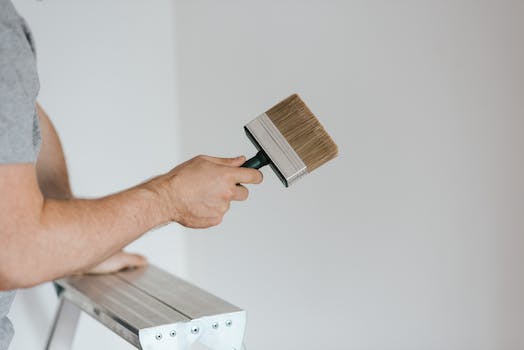Introduction: The Importance of Proper Insulation for Every Home
Every homeowner should understand the crucial role that proper insulation plays in maintaining a comfortable and energy-efficient home. The right insulation not only keeps your home warm during the chilly winter months but also helps it stay cool during the hot summer season. More importantly, it significantly reduces your energy bills by minimizing the need for excessive heating or cooling. But, insulation isn’t a one-size-fits-all situation; it requires careful planning and budgeting to ensure you’re making the most out of your investment. That’s why in this blog, we’re going to delve into the essentials of budgeting for insulation, providing you with the knowledge you need to make informed decisions.
Understanding the Basics of Home Insulation
Understanding the basics of home insulation is crucial for every homeowner. Insulation is the material you use in your home to prevent heat loss or gain. It’s typically placed in areas where air escapes, such as the attic, walls, and floors. The better your home is insulated, the less you’ll need to spend on heating and cooling costs. When budgeting for insulation, consider the type of insulation you need, the area of your home you’re insulating, and the climate you live in. Remember, investing in quality insulation can save you money in the long run by reducing your energy bills.
The Role of Insulation in Energy Efficiency and Cost Savings
Insulation plays a crucial role in energy efficiency and cost savings for homeowners. It works by creating a barrier between the inside of your home and the outside environment, reducing the amount of heat that escapes during winter and enters during summer. This means your heating and cooling systems don’t have to work as hard, leading to significant energy savings. Over time, the money saved on energy bills can more than offset the cost of installing insulation. Therefore, budgeting for insulation is a smart investment that not only makes your home more comfortable but also saves you money in the long run.
Different Types of Insulation and Their Costs
Insulation is a key factor in maintaining your home’s temperature and reducing energy costs. The most common types of insulation are fiberglass, cellulose, and spray foam. Fiberglass is the cheapest, costing around $0.40 per square foot, and is easy to install yourself, making it a popular choice for many homeowners. Cellulose is a bit more expensive at about $0.75 per square foot, but it’s an eco-friendly option made from recycled materials. Spray foam is the most expensive at around $1.50 per square foot, but it provides a high level of insulation and is great for hard-to-reach areas. Keep in mind the costs can vary depending on the thickness you choose and the area you live in.

Evaluating Your Home’s Current Insulation and Its Effectiveness
Understanding your home’s current insulation and its effectiveness is crucial for budgeting for insulation. Start by inspecting your attic, walls, and floors to see what type of insulation is present and in what condition it is. Look for any areas where the insulation may be thin or missing. You can also touch your walls on a cold day; if they feel chilly, it could be a sign that your insulation isn’t working well. Hiring a professional energy auditor can also be beneficial. They can use special tools to measure your insulation’s effectiveness accurately. Remember, upgrading your insulation can lead to significant savings on your energy bills in the long run.
How to Determine Your Insulation Needs and Budget
Determining your insulation needs and budget starts with understanding the size and specific areas of your home that require insulation. A professional energy audit may be beneficial in identifying these areas. Afterward, research the different types of insulation available and their costs, as this may vary significantly. Common types include spray foam, fiberglass, and cellulose, each with different prices and efficiency levels. Once you have this information, you can calculate the total cost of insulating your home. Remember to factor in professional installation costs if you’re not planning a DIY project. Setting up a budget for your insulation needs helps avoid overspending and ensures you can afford to properly insulate your home for maximum energy efficiency.
Steps to Create an Effective Insulation Budget
Creating an effective insulation budget requires a few key steps. Start by conducting a thorough inspection of your home to identify areas that need insulation. Next, research the different types of insulation materials available and their costs, keeping in mind that while some may be pricier, they may also offer better energy savings in the long run. Once you have this information, you can estimate the amount of material needed and its cost. Don’t forget to include labor costs if you’re hiring a professional. Finally, always factor in a contingency amount for unexpected expenses. By following these steps, you can create a realistic budget that won’t break the bank.

Tips to Save Money on Home Insulation Projects
Before embarking on a home insulation project, it’s crucial to have a budget and stick to it. First, conduct thorough research on the cost of insulation materials in your area. Opt for materials that provide excellent insulation but are not overly expensive. Second, consider doing the insulation yourself if you’re handy. This can significantly cut down on labor costs. However, ensure you have the right skills to avoid any mishaps that could end up costing more. Third, ensure your home is properly sealed before adding insulation to prevent heat loss. Lastly, take advantage of government grants or energy-saving programs that offer incentives for home insulation. By following these tips, you can effectively save money on your home insulation project.
When to Hire a Professional for Insulation Installation
When should you hire a professional for insulation installation? It’s advisable to hire a professional when you lack the expertise or time to do the task yourself. A professional can ensure that the insulation is installed correctly and efficiently, which can save you money in the long run. They have the right tools and knowledge to handle different types of insulation materials. Moreover, they know how to address any potential issues that might arise during the installation process, such as handling insulation around electrical wiring or in tight spaces. Therefore, while hiring a professional might seem like an added expense, it can actually be a cost-saving decision.
Conclusion: Maximizing Your Insulation Budget for Long-Term Savings and Comfort
In conclusion, investing wisely in your insulation budget can result in long-term savings and increased comfort in your home. Prioritize areas with the highest heat loss like the attic and walls. Opt for quality insulation materials that provide a high R-value, ensuring maximum resistance to heat flow. Consider professional installation to ensure your insulation is installed correctly for optimal performance. Remember, an energy-efficient, well-insulated home not only reduces your energy bills but also increases your property’s value. Make smart choices now to enjoy the comfort and savings for years to come.
